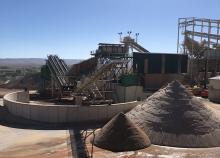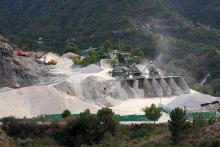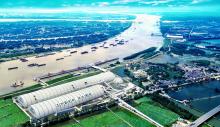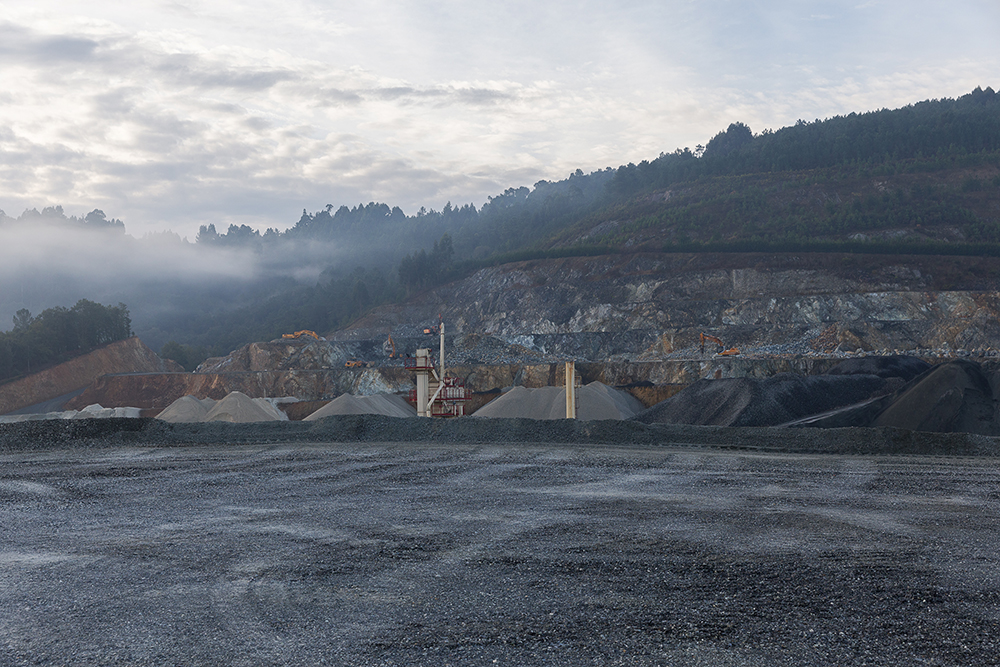
Given it’s 505,990km² size and population of more than 46 million, it is surprising that Spanish aggregates demand is not greater. But analysis of the country’s turbulent modern economic and political history sheds a lot of light as to why estimated natural aggregates consumption stood at 121 million tonnes in 2018. While this represents an increase of 25% on 97 million tonnes in 2013, it is still way down on the 486 million tonnes of aggregates produced in 2006, during the 2000-2007 Spanish construction boom. The figures have been compiled by the FdA (The Aggregates Federation), which represents the interests of Spanish aggregates producing companies, both nationally and internationally.
While the world has had to adjust to a new financial reality following the 2008-2009 global financial crisis, Spain is among countries that have been hit particularly hard. The country is still gripped by a degree of political uncertainty despite the installation on 8 January 2020 of Pedro Sánchez as the leader of modern Spain’s first coalition government. After bitter and protracted stand-offs between various political parties competing for power, the Socialist Party (PSOE) leader and now prime minister is gambling on a coalition with the radical left Podemos party being even harder to oust than it was to put into power.
On a more positive note, aggregates production estimates from the UEPG (European Aggregates Association) show that despite a reduction in the total number of Spanish aggregates-producer companies (1025) as of 2017, compared to 1,140 in 2012, the number of extraction sites has risen from 1,175 to 1,874 over the same five-year period. This indicates encouraging capacity among producers to meet a rise in aggregates demand.
Further encouragement for Spanish aggregates producers can be found in Global Data’s Construction in Spain – Key Trends and Opportunities to 2023 report published in June 2019. The report by the major global business market research consultancy highlights how Spain’s construction industry grew by 7.6% in real terms in 2018, notably up on average annual growth of 3.1% during the preceding four years. Growth during the study’s review period (2014–2018) was said to be driven by positive developments in regional economic conditions and government investment in commercial and industrial infrastructure, as well as recovery in the residential construction sector.
GlobalData states that over its report’s forecast period (2019–2023), the Spanish construction industry’s output will be supported by improvements in consumer and investor confidence. The Spanish government’s efforts to enhance regional connectivity through the development of the country’s transport infrastructure, coupled with efforts to boost the residential construction market, will support the industry’s growth over the forecast period. An increase in the number of new building permits issued is expected to support new construction activity over the same period. In addition, the government’s aim to expand renewable energy resources is expected to attract investments in energy infrastructure projects, which will in turn fuel growth in the industry.
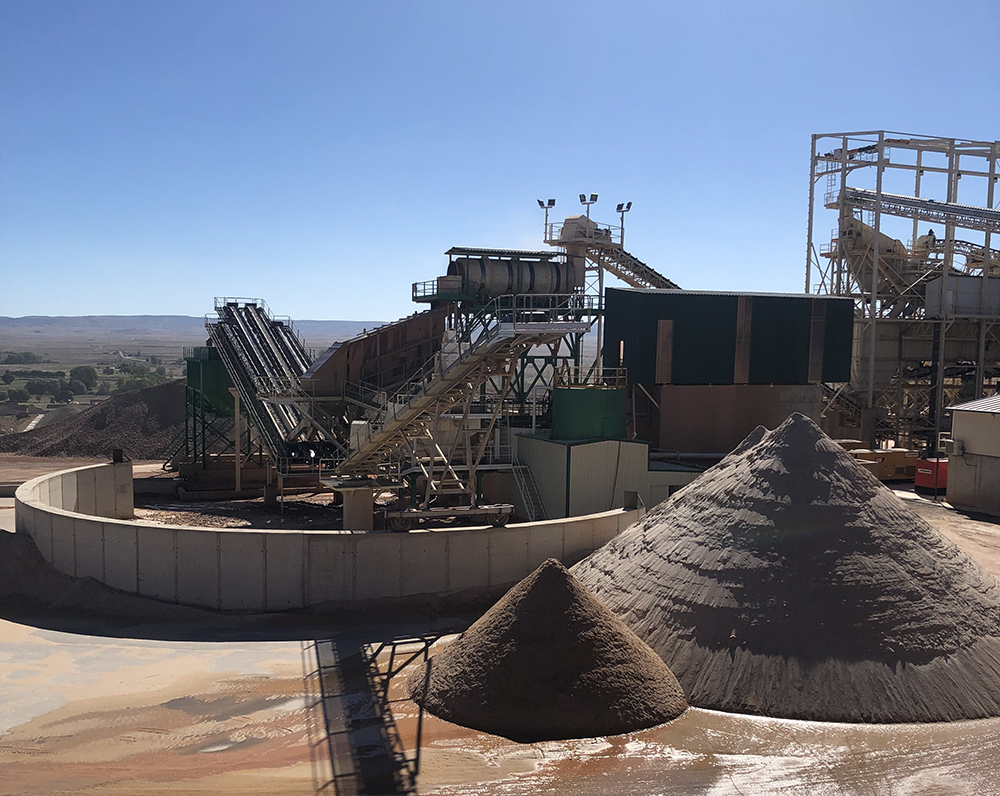
GlobalData expects the infrastructure construction market to record a forecast-period compound annual growth rate (CAGR) of 4.29% in nominal terms in 2023, supported by the government’s plans to develop and modernise the country’s transport infrastructure. In 2019, the country will invest €2.3 billion in the construction and maintenance of roads, €829 million in ports and €689 million in airport infrastructure.
Meanwhile, the total construction project pipeline in Spain – as tracked by GlobalData and including all megaprojects with a value above US$25 million – stands at €67.7 billion. The pipeline, which includes all projects from pre-planning to execution, is skewed towards late-stage projects, with 54.8% of the pipeline value being in projects in the pre-execution and execution stages as of June 2019.
During a tour with Metso around aggregates producers in eastern and northern Spain in late summer 2019, Aggregates Business discovered how OSF Group’s 2016-reopened Ofitas de Santutis quarry is supplying ballast for the Basque Y high-speed rail project linking three major Basque Country cities – Vitoria-Gasteiz, Bilbao and Donostia-San Sebastián. Currently behind its scheduled 2023 completion date, the 194km-route is set to reduce passenger and cargo journey times between the three cities to less than an hour, compared to anything between one hour 40 minutes and two-and-a-half hours currently.
Commenting on the current and likely future health of the Spanish aggregates sector, Angel Luis Garcia, Metso’s Spanish sales manager, said: “Building construction works are taking most of the produced aggregates. Civil works are not in a good shape. Aggregates demand is slowly increasing but too slowly. The reason for this is that in recent years Spain has not had a stable government that is investing in civil works.
“In the last few years a lot of small and poorly performing quarries were closed, and some big companies left their Spanish operations. Now new large and resized medium- and small-sized operators own and run aggregates production companies.
“Generally, aggregates prices have remained higher in the north than in the centre and south of Spain. The environment and health and safety have become priority concerns for Spanish quarry operators.”
Established in 2007, the FdA represents about 700 Spanish aggregates production companies and 1,100 aggregates sites across Spain.Speaking about the contemporary Spanish aggregates industry, César Luaces Frades, FdA director general, said: “Due to the fact that the current aggregates consumption by Spanish inhabitants is less than half of the EU average, the future potential for growth is between +60% to +80%, which would create a reasonable [consumption] situation. However, this will come slowly due to the combination of several factors.
“First of all, the country is still recovering after the [global financial] crisis and national debt is about 100% of GDP. Working within budget constraints, national government policies need to find the right balance between social expenditure and investment in civil works. The maintenance of existing infrastructure is at risk. Public investment in Spain for civil works is 63% less than the investment average of Germany, the United Kingdom, France and Italy. This situation is not sustainable anymore and some infrastructure plans need to be developed.”
Turning his attention to the range of companies operating within the Spanish aggregates production industry, Luaces Frades continued: “The industry includes a small number of international big players that account for less than 20% of total Spanish aggregates production. Around 35% of medium-sized, family-owned companies account for 60% of production, and a wide range of small micro-enterprises account for around 20% of production.
“Big players and medium-sized, family-owned companies are producing and delivering aggregates in the urban markets, while small micro enterprises are covering low rural areas with low population density.”
Luaces Frades notes that according to a recent study, the average size of Spanish aggregates companies in terms of production by site is 21% below the average of the big four (Germany, France, United Kingdom and Italy). The production by company is also 45% lower than the average in the same big four countries.
“One critical issue for the sustainability of the Spanish aggregates industry is to increase the average size of sites and companies,” said Luaces Frades.
Commenting on whether there are regional differences in Spain regarding the size of aggregates producers and the types of aggregates products made, Luaces Frades said: “In terms of products there are few differences between regions, because of the need to comply with CPR (EU Construction Products Regulation), CE (Conformité Européene) marking and national regulations. Of course, by geological reasons, the number of types of rocks is large (among 30 different types of rocks) and, in some regions, a specific type of rock is more relevant than the other.
“Where sand and gravel pits are the main type of sites, their average size is smaller. This is the case for La Rioja, Castilla and Leon, Aragon and Castilla - La Mancha, where sand and gravel sites predominate, above 70%.”
Luaces Frades explains that the main rocks used in Spain to produce aggregates for construction are limestone (45.6%), sand and gravel (29.1%), granite (6.4%), dolomite (5.2%), silica sand (1.3%), porphyry (1.1%) and ophite (1.1%). These categories of rock represent 89.9% of construction consumption.
For aggregates for other industrial uses, the most commonly used are limestone (65.6%), marl (12.1%), sand and gravel (5.2%), dolomite (3.5%), silica sand (2.9%).
Although Portugal’s annual aggregates demand fell from 43 million in 2012 to 30 million in 2017, according to UEPG production estimates, the country’s approximate 150 aggregates producers have reasons to be optimistic, notably due to the Portuguese government’s commitment to a host of big money infrastructure megaprojects.
GlobalData’s Construction in Portugal – Key Trends and Opportunities to 2023 report published in September 2019 notes that Portugal’s construction industry registered growth of 6.3% and 2.2% in real terms in 2017 and 2018 respectively, following an average annual growth of -3.1% during 2014-2016. The consultancy attributes the growth to an increase in private consumption, rising household real disposable income, declining unemployment and rising wages.
Over the study’s forecast period (2019-2023), the Portuguese construction industry is expected to be supported by the government’s focus on developing cross-border transport infrastructure to improve the country’s trade activities. GlobalData highlights the Portuguese government plans to build the Southern European Rail Line to connect Évora in Portugal to Elvas, a town bordering Spain. The project is a part of the €2 billion Ferrovia 2020 plan and involves an investment of €509 million by 2022. Of this total, €232 million will be invested by the European Union (EU). GlobalData also states that the Portuguese government’s focus on developing the renewable energy infrastructure and rising number of building construction permits are also expected to drive public and private sector funding towards construction projects.

Last year saw Portuguese government approval for other big infrastructure projects. July 2019 saw the green-lighting of the expansion of Terminal XXI and construction of the new Vasco de Gama Terminal on the Port of Sines in Setúbal to expand the port’s capacity and address the rising demand for containerised cargo. GlobalData reports that the plan involves an investment of €547 million to expand and renovate the Terminal XXI, while €642 million will be invested in the construction of the Vasco de Gama Terminal.
In January last year, the government approved the 10-year National Investment Program (PNI). As a part of this programme, the government plans to invest €22 billion in transport, energy, environment and irrigation projects by 2030. Of the total, €12.7 billion will be spent on 44 transport projects, €4.9 billion on eight energy projects, €3.6 billion on 18 environment projects and €750 million on irrigation projects.
The total construction project pipeline in Portugal – as tracked by GlobalData and including all megaprojects with a value above US$25 million – stands at €19.3 billion. Just under two thirds (65.9%) of the pipeline value were projects in the pre-planning and planning stages as of September 2019.
Export markets also remain attractive to Spanish and Portuguese aggregates producers. Aggregates Business has visited Solancis, a high-quality stone product maker, which extracts around 800,000 tonnes a year of limestone blocks across its nine quarries in the picturesque Serra De Aire region of central Portugal. The company’s products are in great demand globally for buildings such as hotels, offices, department stores, sports stadia and residential properties. Around 95% of Solancis’ sales are exports to customers in more than 50 countries. China, the US, France and England are among the company’s biggest export markets.
Back at company headquarters after seeing how a Caterpillar loading and hauling machine fleet had increased production efficiency and lowered operating costs at Solancis’s Salgueira quarry, Samuel Delgado, owner of Solancis, stressed how the firm was well equipped for future success. “I have a very positive outlook,” says Delgado “We are a business with a high specialism that works closely with many top architects, and there is a big world market for our limestone products.”
Given the very welcome increased infrastructure-projects-spending commitment by the Portuguese government, as well as new residential and commercial construction works, domestic aggregates demand is set to rise, with producers able to look a lot closer to home as well as to export customers in order to achieve sustainable sales and revenue growth.

